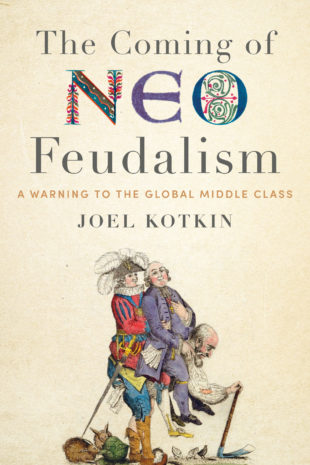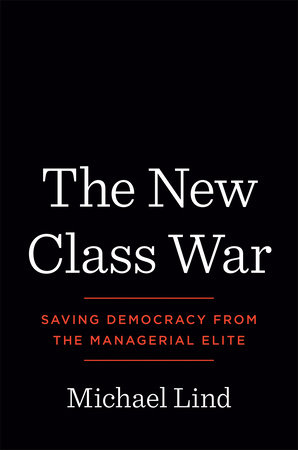
THOMAS EDSALL, NY TIMES
The public response to the demonstrations over the killing of George Floyd is now beginning to take shape more clearly along familiar ideological lines.
he New York Times-Siena College poll of 1,337 registered voters conducted June 17-22, for example, found that among Democrats, 89 percent had a favorable opinion of Black Lives Matter, including 74 percent whose views were “strongly favorable.”
In contrast, 36 percent of Republicans held a favorable view of Black Lives Matter, with 12 percent strongly favorable. Fully half of Republicans hold an unfavorable view of the movement, compared with 8 percent of Democrats.
When voters were asked by the NYT-Siena pollsters to choose between two statements about the George Floyd protests — either “I support the demonstrations because they’re mainly peaceful protests with an important message” or “I oppose the demonstrations because too many have turned to violent rioting” — Democrats supported the protests 82-15, while Republicans opposed them, 68-25.
What these numbers tell us is that the demonstrations, and the electorate’s reaction to them, will play a key role in the 2020 election.
In a June 12 survey, Pew Research reported that “Republicans and Democrats have vastly different views on the factors underlying the protests”: 80 percent of Democrats and those who lean to the Democratic Party say that “anger over Floyd’s death after his arrest by police and tensions between Black people and the police have each contributed a great deal to the protests.”
At the same time, “much smaller majorities (59 percent) of Republicans and Republican leaners say anger over Floyd’s death contributed a great deal” and that “tensions between police and Black people (57 percent) contributed a great deal” to the protests.
An even wider gap emerged in partisan responses to a question asking whether “longstanding concerns about the treatment of Black people in the country” contributed a great deal to the protests. 84 percent of Democrats agreed compared with 45 percent of Republicans.”
Republicans also took a far more negative view of the motivation of the many large groups of diverse protesters. 82 percent of Republicans agreed with the statement that “some people taking advantage of the situation in order to engage in criminal behavior” was a major factor in the protests, more than double the 39 percent of Democrats who agreed.
There is a range of perspectives among scholars over who the protesters are, especially the white participants.

Joel Kotkin of Chapman University and the author of “The Coming of Neo-Feudalism,” and Michael Lind of the University of Texas and the author of “The New Class War,” take divergent positions.

In an article posted on June 10, “The Rebellion of America’s New Underclass,” Kotkin wrote:
The underlying causes of our growing civic breakdown go beyond the brutal police killing of George Floyd. Particularly in our core cities, our dysfunction is a result of our increasingly large, and increasingly multiracial, class of neo-serfs.
Kotkin elaborates: “Today’s serf class consists of the permanently marginalized — like the peasants of feudal times, these people are unlikely to move to a higher station,” and this class encompasses
many of our young people, white and otherwise, who appear to have little or no hope of attaining the usual milestones of entry into the middle class — gaining a useful and marketable skill, starting a small business, or buying a home or other property.
In a June 2 essay, published on the Tablet website, Lind sketches out another group of protesters he sees as a key component of the new metropolitan left:
The children of the white urban elite — some of them downwardly mobile for life, some of them just going through the underpaid intern phase of professional careers — have colonized rowhouses where workers once lived and have converted former factories and warehouses into settings for la vie bohème.
Lind continues:
This group of 20- and 30-somethings in the new urban bohemia are the constituency for the new progressive left. Children of the managerial overclass join the Democratic Socialists of America (DSA) and engage in purges and cancellations on Twitter and move to Brooklyn on allowances from their parents.
Dana Fisher, a sociologist at the University of Maryland who has been conducting detailed surveys of the demonstrators, presented a more nuanced view of the protesters in an email:
First and foremost, protest participants are highly educated. Over 62 percent reported a B.A. or higher at every protest where we surveyed,” although she acknowledges that they “may be feeling economic anxiety since they tend to be entering adulthood during the current economic crisis — the median age of protesters is 30 or younger depending on the day and location.
According to her surveys, conducted by interviewing every fifth person encountered at demonstrations, “more than 60 percent reported voting in primaries earlier this year, double the average for all voters, and many report contacting an elected official in the past year,” a strong signal of political engagement.
Fisher’s data from three days of polling in the District of Columbia showed that 52.9 percent of the protesters were white; 25 percent were Black; just over 10 percent were Asian-American and just under 4 percent were Hispanic. A quarter were 24 or younger.
In an article posted June 28 at Business Insider, Fisher wrote that in studying the demonstrators:

Every single person surveyed at events in Washington DC, New York City, and Los Angeles over the past month reported that they would be supporting Joe Biden in the election. In fact, not one respondent reported that they would vote for Donald Trump.
There are some red flags for Democrats in Fisher’s data.
Fisher wrote that 60 to 65 percent of the demonstrators agreed with the statement “some level of violence is justified in the pursuit of political goals.”
“These numbers are in stark contrast to data collected at the March for Racial Justice in 2017,” when just 40 percent agreed some level of violence is justified, she wrote, “suggesting that in less than three years, the people who participate in protests about racial justice in the US have changed their opinions substantially.”

The views of protesters concerning the legitimacy of violence stand in contrast to the views of voters taken as a whole.
A Reuters/Ipsos survey found that 72 percent of those polled disagreed with the statement “more violent protests and unrest are an appropriate response to the killing of an unarmed man by police,” including a solid majority of Democrats.
An even larger percentage (79), including 77 percent of Democrats, agreed with the statement: “The property damage caused by some protesters undermines the original protest’s case for justice.”
The Times/Siena survey asked voters whether they support or oppose “reducing funding to police departments,” a less extreme step than the call among some demonstrators to “defund the police.”
Nearly two thirds of voters polled, 63 percent, opposed reduction of funding of police departments, including 50 percent who said they “strongly oppose” such actions.
What makes these issues even more potentially polarizing, going into the 2020 election, is that there has been an increase in violent crime, especially homicide and shooting incidents, in the weeks since George Floyd was killed, in some of the cities experiencing sustained protests and anti-police demonstrations. These cities include Los Angeles, Atlanta, New York and Chicago.
Donald Trump is already running ads online and on TV attempting to capitalize on these trends. One spot shows looters and burning buildings while the words “Joe Biden fails to stand up to the radical left” appear on the screen. Another Trump ad that ran on Facebook warned: “Dangerous MOBS of far-left groups are running through our streets and causing absolute mayhem.”

Trump’s Twitter feed, in turn, continues to serve as a weapon in his drive to demonize Democrats and the left, Josh Dawsey of the Washington Post noted on June 30:
As the country convulses from incidents of police killings, mass protests and a rapidly spreading pandemic that has led to double-digit unemployment, the president seems most intent on inflaming an already burning culture war, using his Twitter feed to focus on vandalism by protesters and the well-being of statues that have been targeted.
Given the degree of voter polarization — especially in the context of a surging coronavirus and jarring economic upheaval — the outcome of the 2020 election is likely to be determined by factors other than money, perhaps most importantly by the success or failure of the George Floyd demonstrators in retaining unforeseen levels of public sympathy.

So far, Trump’s attempt to focus public attention on the looting, burning and sometimes indiscriminate toppling of statues has been outdone by the emergence of an ever longer list of African-American victims of police brutality, by new videos of police violence, much of it collected by T. Greg Doucette, a lawyer in North Carolina, and by the filing of murder charges on June 17 against an Atlanta police officer in the shooting death of Rayshard Brooks.
For the moment, the electorate appears to be less racist than it was in 2016, and notably less comfortable with racism.
Nonetheless, Henry Louis Gates Jr, a university professor at Harvard and the director of the Hutchins Center for African & African-American Research there, warned in an interview that

Racism has been part of America’s cultural DNA since before the ink dried on the Constitution. Dominant in some and recessive in others, it’s a gene that has mutated over time yet remains part of the inheritance weighing us down, one generation to the next. The damage it has done is systemic and goes all the way down to the cellular level.
Traditionally, it has been the Democratic Party that was most vulnerable to fracture over race, racism, crime and family dysfunction. But this year, as my Times colleague Adam Nagourney pointed out on June 29 in “Trump’s Self-Inflicted Wound: Losing Swing Voters As He Plays to His Base,” the susceptibility to division is also a Republican problem: “Mr. Trump’s focus on his base at the expense of swing voters,” Nagourney wrote, “is almost certainly not enough to win him a second term.”
The key group, Nagourney continued, is the nine percent of the electorate identified in the Times/Siena poll as undecided, but these voters may be out of reach:
They, like much of the country, hold unfavorable views of Mr. Trump’s job performance, and particularly his response to the pandemic and to the demonstrations that followed the killing of George Floyd by the Minneapolis police.
Across the country, significant support has emerged for broad efforts to combat police brutality and racism, but that support is not monolithic. The current tilt in favor of the demonstrators is likely to face concerted, ugly pushback from Trump and his minions — and there are four long months to go before the election.
